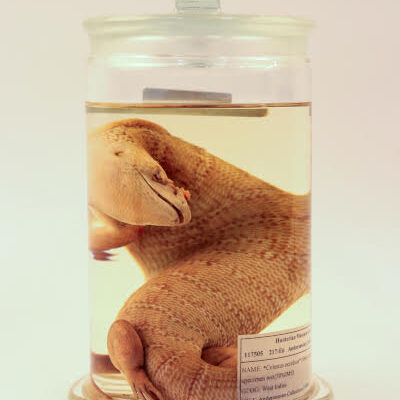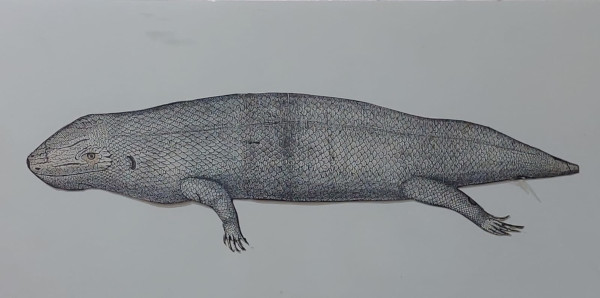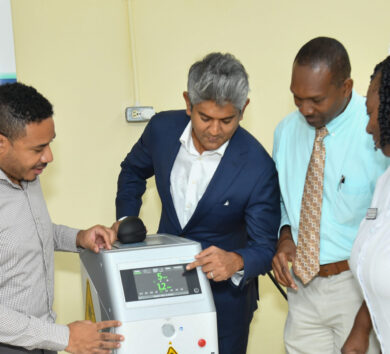

Scientists from the Institute of Jamaica’s Natural History Museum of Jamaica (NHMJ) and The University of the West Indies, Mona, returned to Jamaica last night with a repatriated Jamaican Giant Galliwasp from Scotland – 170 years after the reptile was first taken from the island.
The joint team, which travelled to Scotland on a four-day visit on the weekend to retrieve the 16-foot specimen from their counterpart scientists at the University of Glasgow (UofG), had an official handover on Monday before touring the centuries-old zoology museum at the Hunterian where the Giant Galliwasp, or “GG” as it is called, had been housed for years.
Hailed as a significant, the move marks the “first repatriation of a natural history [zoological] specimen in the Caribbean” and also “signifies a milestone for scientific research and cultural heritage preservation in the region”. The specimen is also expected to become a tool of engagement for Jamaican students and others interested in the life sciences, and reparations.
NHMJ senior research officer, entomology, Dionne Newell, one of five scientists who retrieved the reptile and the lone individual to have seen a Jamaican GG prior to this, on a visit to London, describes the repatriation as ground-breaking.
“The repatriation of the Jamaican Giant Galliwasp is ground-breaking for Jamaica’s reparations movement. For us at the Institute of Jamaica it takes on even greater significance as, this year, we are celebrating our 145th anniversary, which only serves to strengthen our resolve to preserve all aspects of our culture and educate our people through “literature, science and art. This is an exciting time for Jamaican culture. Students and adults alike will be fascinated by the GG”.

The Jamaican Giant Galliwasp has been extinct from Jamaica and the Caribbean since the mid-1800s after the reptile came under attack from rats and rodents from the then booming sugar cane industry under Jamaica’s colonial government. Their habitats mostly in wetlands, the specimen was originally found in the Black River Morass and swampy areas of Clarendon.
The repatriation team includes Newell and zoologist Elizabeth Morrison, both of NHMJ/IOJ; UWI Museum curator Dr Shani Roper, Dr Tannice Hall of the Department of Life Sciences, and graduate student Desrina DesLandes.
The Jamaican Giant Galliwasp will be added to the National Zoological Collections at the NHMJ. An official installation will be held at the museum on May 24.
NHMJ opens to the public for tours Monday to Friday, 9 a.m. to 4 p.m. and every last Sunday, 9 a.m. to 5 p.m.







Comments